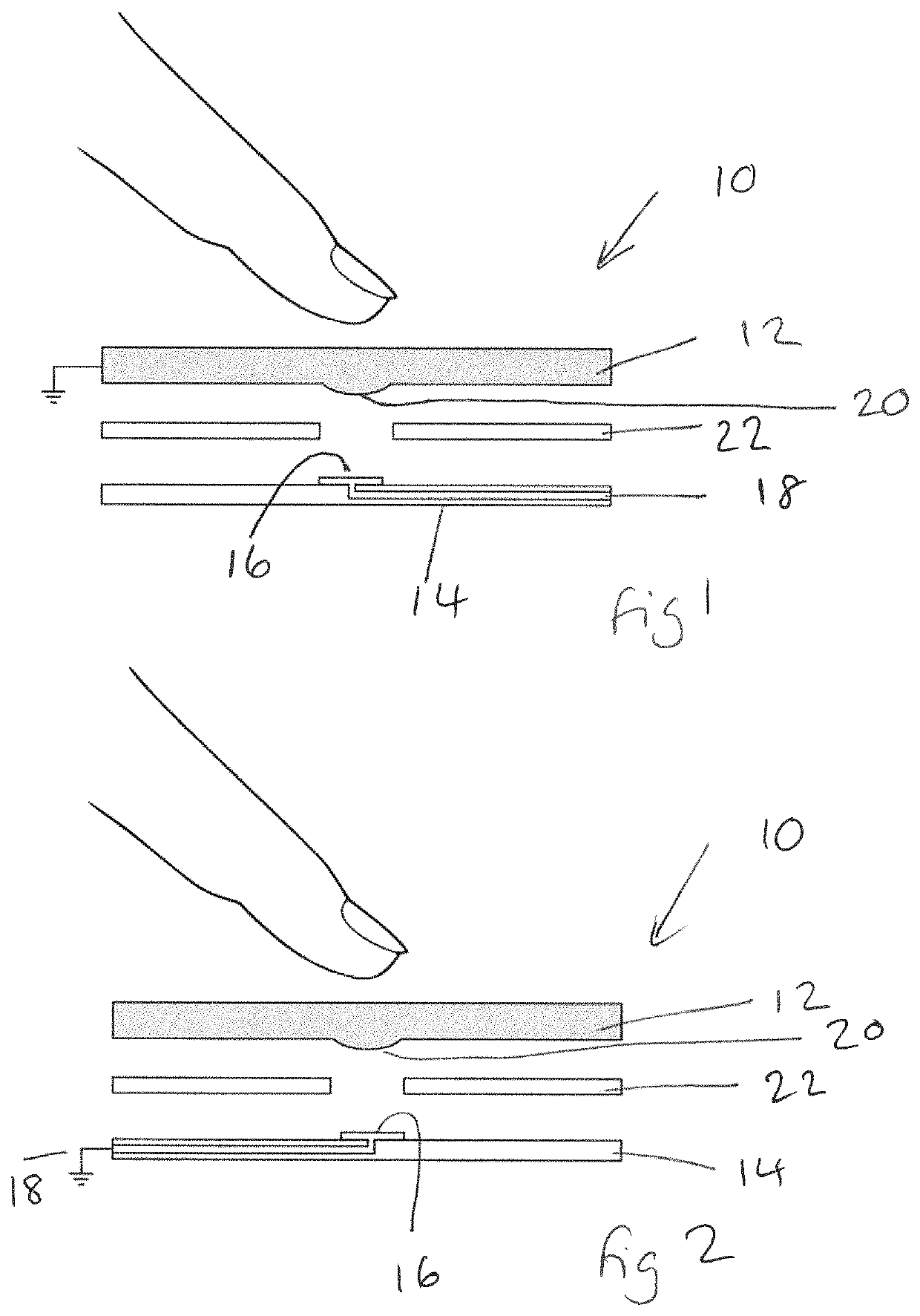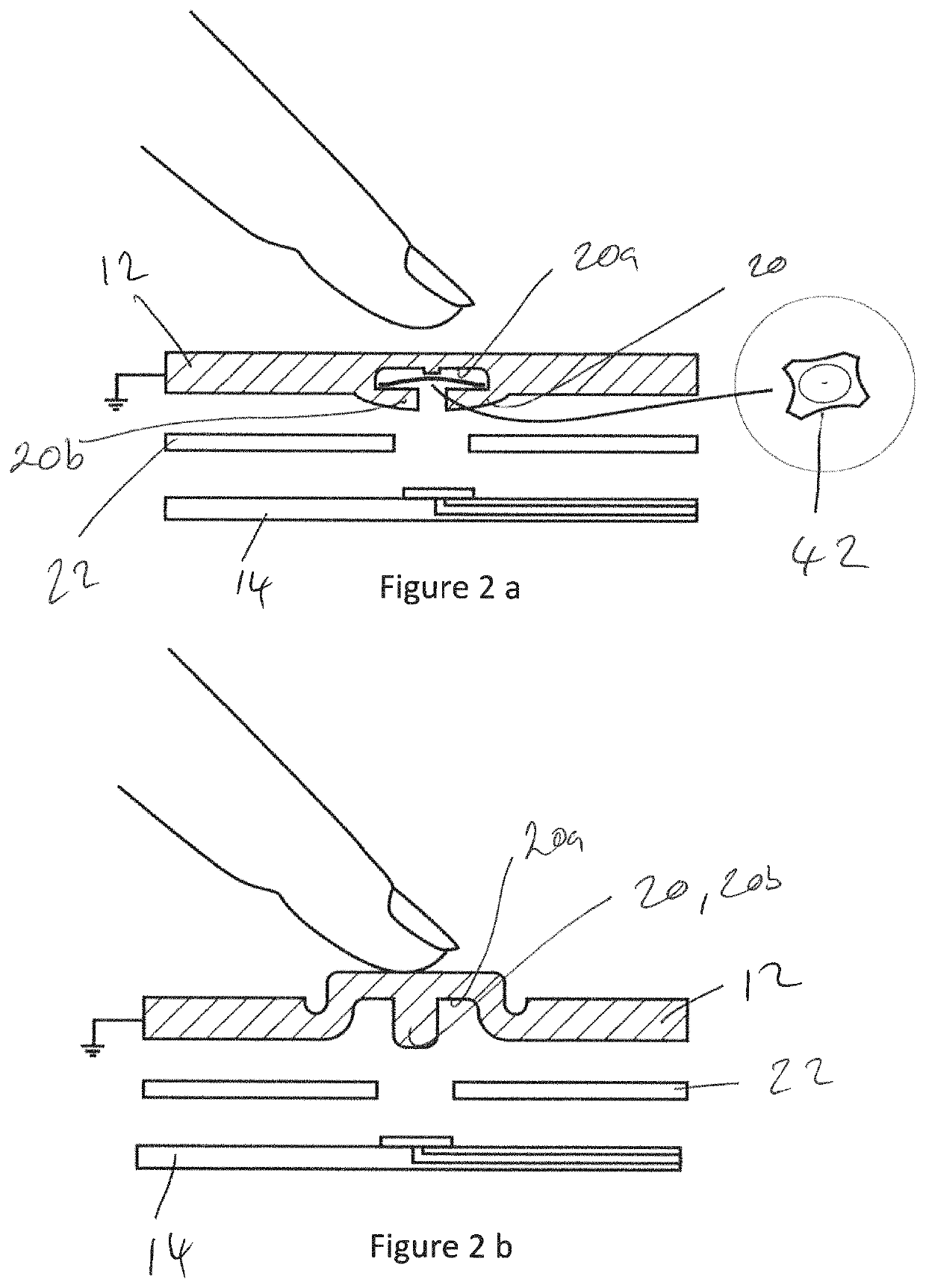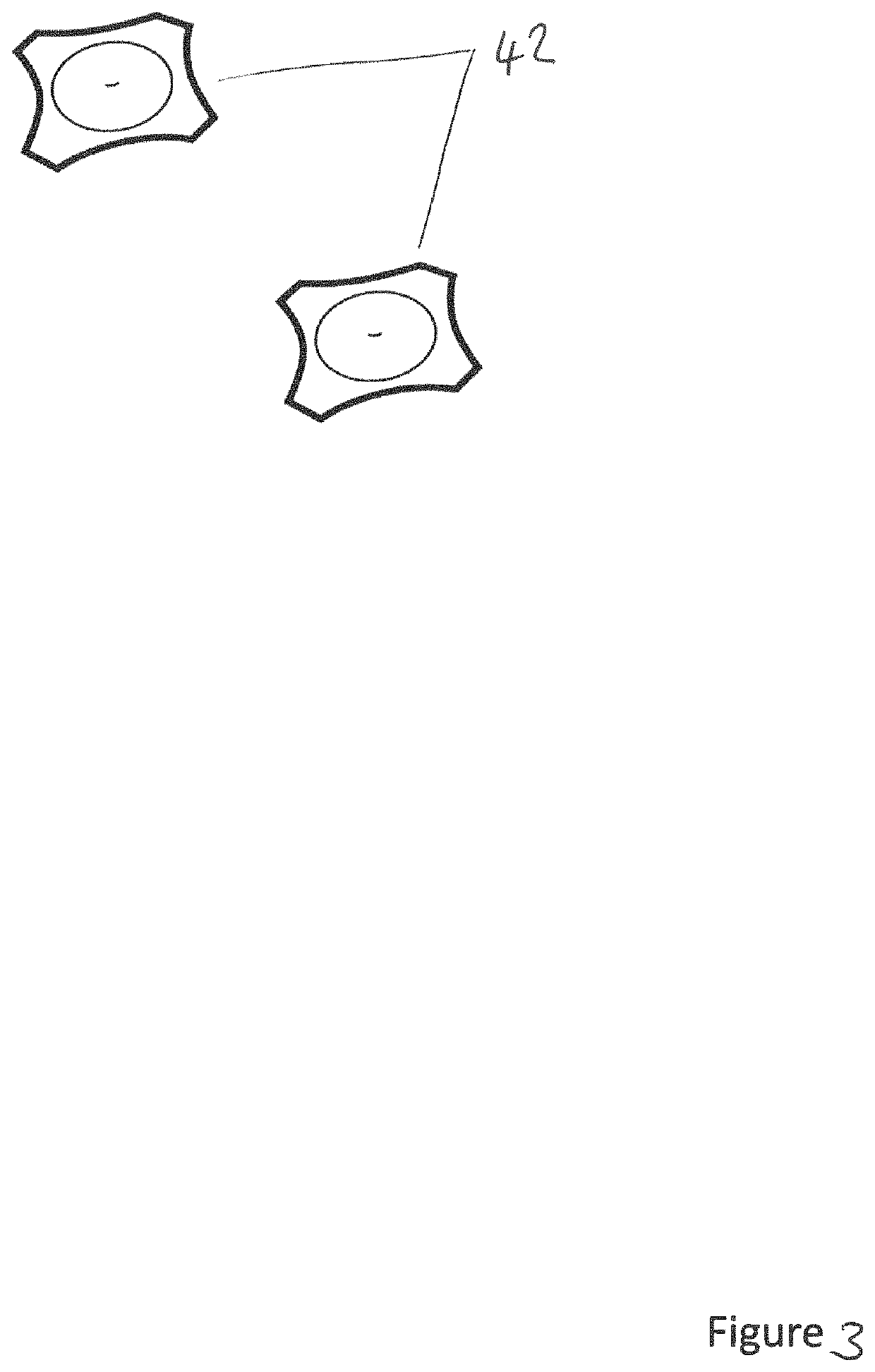Sensor device and method
a technology of a sensor and a housing, applied in the direction of mechanical control devices, manual control with a single controlling member, instruments, etc., can solve the problems of limited use of certain applications, easy entry of water, dust and other contaminants into the gaps between the control features and the housing, and good longevity and reliability, so as to increase the signal change range in the intended touch area. , the effect of modularity and resolution
- Summary
- Abstract
- Description
- Claims
- Application Information
AI Technical Summary
Benefits of technology
Problems solved by technology
Method used
Image
Examples
Embodiment Construction
[0068]FIG. 1 shows a sensor device or user interactive element 10. The sensor device 10 comprises a layer or portion of electrically conductive material 12. The sensor device also has a circuitry layer 14 and a barrier, preferably in the form of a separation or isolation layer 22 between the layer of electrically conductive material and the circuitry layer. The whole device 10 can be configured to fit in or on top of an existing counter-part, e.g. a car interior door panel (as shown in FIG. 21, discussed below). It is to be appreciated that whilst it is necessary for the conductive layer 12 to be adjacent to the separation layer 22 and for that to be adjacent to the circuitry layer 14, these need not be flat layers.
[0069]The conductive layer 12 is provided in the form of a generally planar sheet 12. The conductive material 12 is pliable, deformable and / or flexible. The conductive material 12 may be formed of a silicone rubber containing conductive material such as conductive metal p...
PUM
| Property | Measurement | Unit |
|---|---|---|
| thickness | aaaaa | aaaaa |
| electrical | aaaaa | aaaaa |
| electrically conductive | aaaaa | aaaaa |
Abstract
Description
Claims
Application Information
 Login to View More
Login to View More - R&D
- Intellectual Property
- Life Sciences
- Materials
- Tech Scout
- Unparalleled Data Quality
- Higher Quality Content
- 60% Fewer Hallucinations
Browse by: Latest US Patents, China's latest patents, Technical Efficacy Thesaurus, Application Domain, Technology Topic, Popular Technical Reports.
© 2025 PatSnap. All rights reserved.Legal|Privacy policy|Modern Slavery Act Transparency Statement|Sitemap|About US| Contact US: help@patsnap.com



